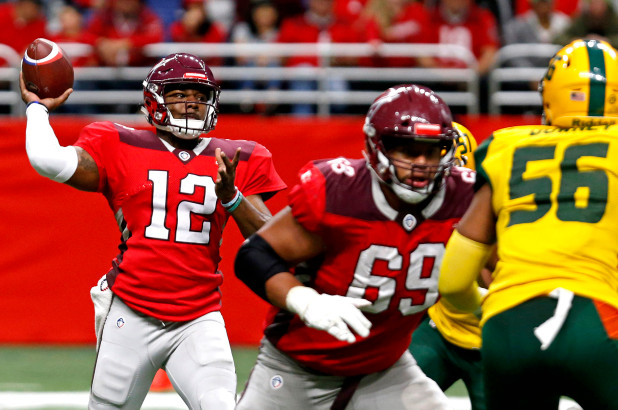On April 2, the Alliance of American Football (AAF) suspended its operations just 52 days after beginning play. Controlling owner Thomas Dundon, who appeared to save the league in February by purchasing a majority stake, ordered the shutdown without allowing the league to finish its first season. The decision came as a shock to almost everyone involved in the league, including executives, coaches and players. Players were in the middle of practice when the news broke and were forced to pay for their own flights back home.
The abrupt suspension of the league comes off as fascinating to many, as the league had seen quality ratings through a strong television deal that included games on TNT, CBS and NFL Network. The AAF has yet to release a statement regarding the future of the league, but it announced through its official Twitter account that players could leave their contracts to sign with National Football League (NFL) teams beginning April 4. The idea of a 2020 season remains a possibility, but with Vince McMahon’s XFL arriving as another professional spring football league next year, the prospect of the AAF continuing seems all too unlikely.
Filmmaker Charlie Ebersol and former NFL executive Bill Polian announced the AAF on March 20, 2018. Ebersol, the son of former NBC Sports president Dick Ebersol, had been encouraged to create the AAF after producing the ESPN documentary This Was the XFL, which examined the history of the XFL. The XFL had been a professional spring league in 2001, operating as a joint venture between the World Wrestling Federation and NBC. Despite its failures, Ebersol felt a new spring league with a better product could be a long-term success. Ebersol and Polian helped bring in former NFL players Hines Ward, Justin Tuck and Troy Polamalu to serve as league advisers. In addition, College Football Hall of Famer Steve Spurrier was announced as head coach of the Orlando Apollos just a few weeks after the announcement of the league. Minor rule changes were also implemented in order to help differentiate the league from the NFL. Kickoffs and extra point kicks were eliminated, forcing teams to attempt a two-point conversion after every touchdown. The play clock was shortened from the NFL’s 40 seconds to 35 seconds, and television timeouts were abolished completely in order to help speed up the game.
The new rules and personnel surrounding the league helped bring in a large audience for the inaugural game, with an average of 2.9 million viewers tuning in. Ratings did drop significantly after week one, and just 10 days after play began Dundon invested $250 million into the league to save it from not making payroll. As a result of his investment, Dundon was named the new chairman and received a majority stake in the league. Ebersol also admitted that the AAF had been close to shutting down multiple times before the first week of games and was reportedly losing millions of dollars per week. As the season progressed into early March, Polian disclosed that the AAF and NFL had discussed the possibility of the AAF becoming a de-facto developmental league for the NFL. Dundon later stated that the AAF was looking at numerous options regarding its future, including suspending play if the NFL was unwilling to partner with the AAF. The final decision ultimately came from Dundon himself, who will be forced to eat a majority of the money he invested just a few months ago.
The AAF’s failure does not bode well for the XFL, which was revived by WWE Chairman and CEO Vince McMahon last January. The XFL plans to kick off in the spring of 2020 with eight teams, including one in Washington, DC. Both the AAF and XFL were working against history in starting up professional alternatives to the NFL as previous leagues including the United States Football League, World Football League and United Football League all failed in creating a legitimate competitor to the NFL. The AAF appeared to have the right approach with a strong group of leaders and executives, but in the end a lack of initial finances and disagreement over the league’s future forced the Alliance to fold. The AAF was able to give many football players a second opportunity to play football professionally and created new ideas that the NFL can implement to improve America’s most popular game.












































